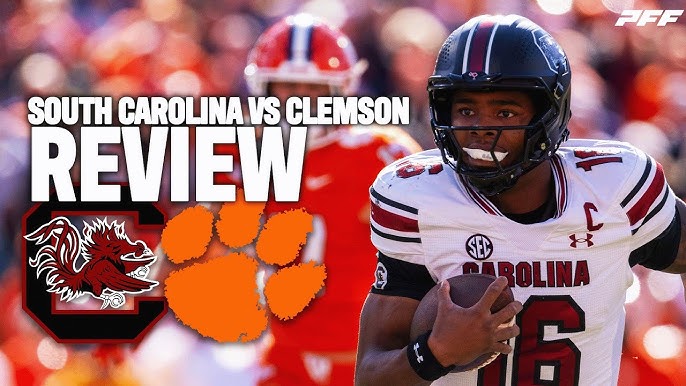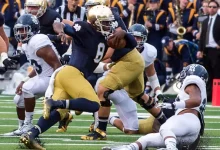South Carolina vs Clemson One of the Most “Unbalanced” Rivalries in College Football

South Carolina vs Clemson One of the Most “Unbalanced” Rivalries in College Football
College football boasts many storied rivalries, each characterized by passion, tradition, and intense competition. Among these, the South Carolina vs. Clemson rivalry stands out not only for its fervor but also for its pronounced imbalance in competitiveness over the years. Dubbed one of the most “unbalanced” rivalries in college football, this matchup reveals a complex tapestry of history, regional pride, and shifting dominance, making it a fascinating case study in the dynamics of sports rivalries.
Historical Origins and the Early Years
The rivalry between South Carolina and Clemson dates back to 1896, with the first game played at the South Carolina Fairgrounds in Columbia. Initially, both programs were relatively evenly matched, with sporadic periods of dominance shifting between the two. Clemson, founded in 1896 and located in the northwestern part of the state, quickly established itself as a football powerhouse in the early 20th century, while South Carolina, established in 1892, struggled to find consistent success.
Throughout the first half of the 20th century, Clemson often held the upper hand, especially during the 1940s and 1950s, when the Tigers enjoyed multiple conference titles and bowl appearances. South Carolina, meanwhile, was frequently battling to stay competitive, often finishing seasons with losing records. This early imbalance laid the groundwork for a rivalry that would become increasingly skewed over the decades.
The Shift in Power: The 1960s and 1970s
The rivalry’s landscape began to shift in the 1960s and 1970s, a period marked by changing coaching regimes and recruiting strategies. South Carolina, under coaches like Paul Dietzel and Jim Carlen, started to elevate its program, occasionally challenging Clemson. However, Clemson maintained its dominance, thanks in part to strong recruiting, better facilities, and a consistent coaching staff.
During this era, Clemson’s football program thrived, while South Carolina’s struggled with stability and success. The Tigers accumulated more wins, conference titles, and bowl appearances, further widening the competitive gap. The rivalry, which once had moments of parity, increasingly reflected Clemson’s dominance.
The Modern Era and Continued Disparity
The rivalry’s most recent decades have solidified its reputation as one of college football’s most unbalanced contests. Clemson, especially since the 2000s under coaches Dabo Swinney and Tommy Bowden, has transformed into a national powerhouse, winning multiple ACC titles and national championships. During this period, Clemson has been consistently ranked among the top teams nationally, producing NFL-caliber players and setting a high bar for excellence.
South Carolina, meanwhile, has often struggled to match Clemson’s success. While the Gamecocks have experienced notable seasons, including SEC East division titles in 2010 and 2017, they have generally lagged behind Clemson in talent, recruiting, and national prominence. The Gamecocks’ sporadic successes have been overshadowed by Clemson’s sustained dominance.
This disparity is reflected in the all-time series record. As of 2023, Clemson leads the series with a significant margin—over 70 wins to South Carolina’s roughly 40—highlighting the long-standing imbalance. The frequency of Clemson victories, especially in recent years, underscores the challenge South Carolina faces in closing the gap.
Key Moments and Turning Points
Despite the imbalance, the rivalry has produced memorable moments and intense games. Some notable examples include:
– **The 1980 Game:** Clemson was a national contender, and South Carolina pulled off an upset, marking one of the few instances where the Gamecocks defeated the Tigers during Clemson’s dominant era.
– **The 2013 “Blackout Game”:** Clemson’s dramatic 31-17 victory over South Carolina, featuring a late-game rally, rekindled rivalry intensity and showcased Clemson’s rising prominence.
– **The 2019 Duel:** Clemson, led by Trevor Lawrence, defeated South Carolina convincingly, further emphasizing the program’s ascendancy.
These moments, while significant, have often been overshadowed by Clemson’s consistent winning streaks and South Carolina’s struggles to keep pace.
Factors Contributing to the Imbalance
Several factors have contributed to the rivalry’s unbalanced nature:
1. **Recruiting and Resources:** Clemson’s investment in facilities, recruiting infrastructure, and coaching staff has consistently outpaced South Carolina’s, allowing Clemson to attract higher-rated prospects.
2. **Coaching Stability and Strategy:** Clemson’s long-term coaching stability under Dabo Swinney has cultivated a culture of excellence, while South Carolina has experienced coaching changes and instability that hampered sustained success.
3. **State Support and Fan Base:** Clemson’s regional support in the upstate and its national profile have helped sustain a competitive advantage, while South Carolina’s resources and recruiting base have been more limited.
4. **Conference Competition:** Both schools compete in the Atlantic Coast Conference (ACC) and Southeastern Conference (SEC) respectively. Clemson’s alignment with the ACC has historically provided a more consistent path to conference titles, while South Carolina’s SEC schedule has been more challenging, impacting overall performance.
5. **National Exposure and Branding:** Clemson’s rise to national prominence has created a cycle of attracting top talent and media attention, further widening the gap.
The Cultural and Regional Significance
Despite the imbalance, the rivalry remains fiercely contested and emotionally charged. For South Carolina fans, defeating Clemson is a matter of pride, representing regional identity and resilience. For Clemson supporters, dominance in the rivalry affirms their program’s superiority.
The rivalry’s unbalanced nature has fueled narratives of underdog perseverance for South Carolina, while Clemson’s sustained success has become a blueprint for others. The rivalry also reflects broader regional dynamics, including economic disparities, institutional priorities, and alumni engagement, shaping the competitive landscape.
The Future Outlook
While Clemson’s dominance appears entrenched, rivalries are inherently unpredictable. South Carolina’s recent coaching hires, recruiting efforts, and infrastructural investments aim to narrow the gap. The program’s leadership recognizes that sustained competitiveness requires strategic planning and resilience.
Additionally, the rivalry’s historical imbalance may serve as motivation for South Carolina to elevate its program. Conversely, Clemson’s continued excellence raises the stakes for future contests, fueling the desire for the Gamecocks to make meaningful strides.
An Unbalanced but Vital Rivalry
The South Carolina vs. Clemson rivalry exemplifies how historical context, resource allocation, coaching stability, and regional factors influence the competitiveness of college football rivalries. Its longstanding imbalance—where Clemson has maintained a significant edge—does not diminish the rivalry’s intensity or cultural importance. Instead, it highlights the dynamic nature of college sports, where even dominant programs face challenges, and underdog stories remain possible.
As the rivalry continues, it remains a compelling chapter in college football history—one marked by passion, tradition, and the ongoing quest for parity. Whether Clemson’s dominance persists or South Carolina manages to turn the tide, the rivalry’s significance transcends the scoreboard, embodying the spirit of competition that makes college football uniquely captivating.








